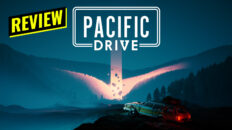Imagine Earth is a futuristic city builder that has you settling on various planets throughout the galaxy. Imagine Earth’s unique feature, aside from its globe-like point of view, is its focus on your planet’s climate. Many of the structures and resourcing options you have come with an environmental trade off. Pollute a planet too much and you may see diminishing returns, more extreme environmental events, and higher galactic taxes. On the other hand, you’re rewarded for reducing greenhouse emissions, planting and maintaining forests, and researching sustainable ways to produce food. It’s all pretty simple and shrinks an entire planet down to a handful of settlements. However, it’s very satisfying to start out scrappy and inefficient, then slowly upgrade your infrastructure to “become one” with the planet.
The game features a campaign mode, competition mode, and endless mode. The campaign works as a tutorial, but also has you bouncing from a large variety of different planets. The writing and voice acting of the campaign characters is hit or miss, but they get their point across and the mode does a good job of teaching you the ropes. Each planet type has it’s own unique concerns; like sources of food, natural power sources, and hazards. A large tech tree allows you to focus on only the buildings you need to, but you can also buy licenses to acquire certain technologies immediately instead of having to wait for them to be researched. While the game does, on the surface, offer the option choose between exploitation and harmony, it strongly pushes you down the harmony path. On the other hand, it’s really easy to just cover the planet in oil platforms and coal generators, then sit back and strip-mine the whole place of natural resources. There’s very little challenge there, however.
Graphically the game offers a really unique perspective, giving you a globe-like view of your entire planet. You can spin it around to quickly move from continent to continent, although it can be a little disorientating from time to time. Each planet and biome offers a unique, colorful aesthetic even if it’s usually just a re-skin of the same resource. For instance a tropical forest offers the same benefits of a temperate forest, but looks different to match the biome it’s in. Overall, it’s a very good looking game and the art does a great job of reflecting what’s going on.
Imagine Earth is a very solid city builder. It’s focused approach helps it stand out among others city builders that try to do more. It also tackles a lot of contemporary, real-world issues allowing it to serve as a kind of learning tool. The presentation helps keep your eyes busy while also allowing you to assess your settlement at a glace. Even with just the campaign you can spend hours making the perfect city, but the addition of the more custom modes means an almost unlimited number of scenarios to challenge yourself with.







